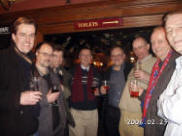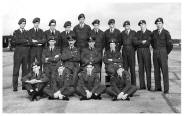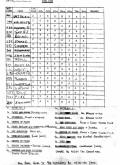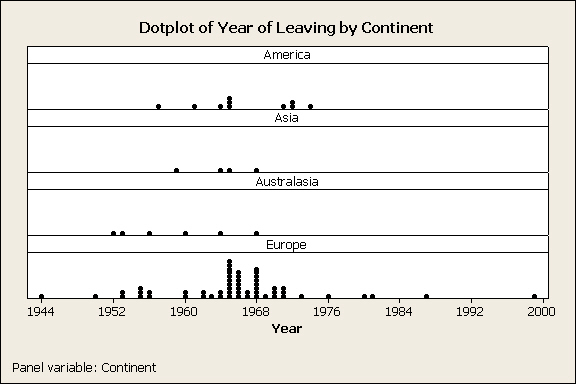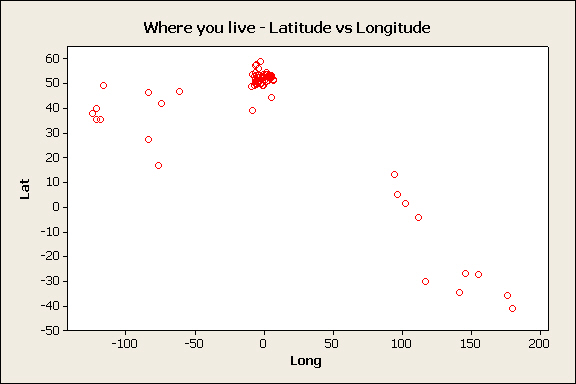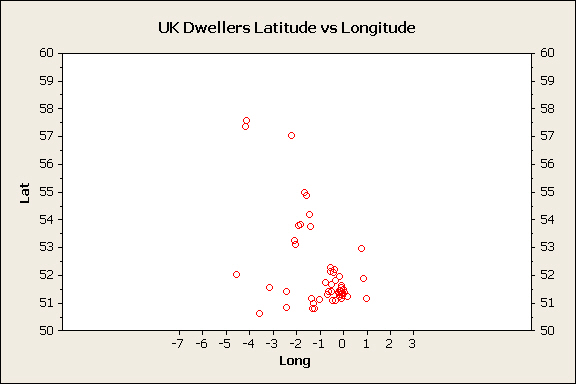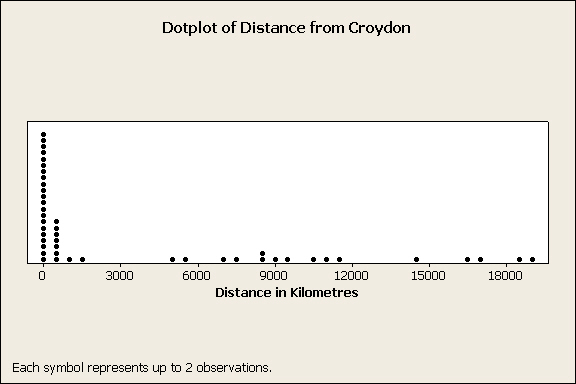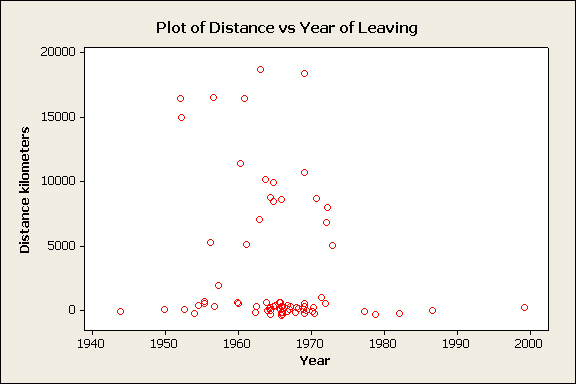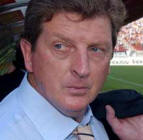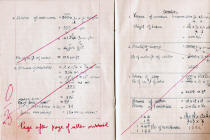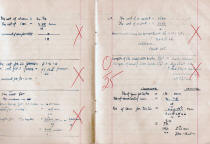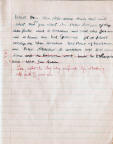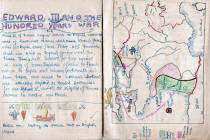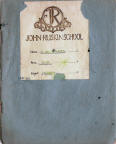|
Peter Hurn (JRGS 1967-73) recalls an Alumni reunion last February... |
|
Lynne took many, many photos and has published them on the PhotoBucket
website. Peter Hurn, Wallington, May 2006 Email |
|
Eric Webster (JRGS 1962-67) unearths a 1965 image of 1924 Squadron ATC... |
|
Eric Webster, New Zealand, May 2005 email. ML adds: Part of the Air Cadet Organization (ACO), which also includes RAF Sections of the Combined Cadet Force (CCF), the Air Training Corps is a voluntary youth organization supported by the Royal Air Force. Today, with almost 53,000 members, aged from 13 to 18 years within more than 1,000 Squadrons, the ATC is the world's largest youth air training organization. [More]
Mike Marsh (JRGS 1949-55) adds:
When I was in 1924 Squadron, the Air Training Corps was intended as a
possible stepping stone to joining the RAF in due course, just as it
still is today. In those days it was, of
course, conscription, but having been in the ATC meant that you had
preferential choice as to which Service you entered. Once in, those who
had been in the ATC received a number in the "3" sequence, whereas
"ordinary" mortals were in the "6" series I recall. My number was
3151346; this marked you out as someone who might know a thing or two
about the RAF and Service life and how to conduct oneself in a Service
situation. |
|
Terry Weight (JRGS 1959-65) analyses where The Alumni currently live... |
|
Fellow Alumni; you may be interested to know that we must have been awful at languages – only 5% of us live in non-English speaking countries even though 29% of us live outside the UK – a bunch of colonialists!
Some Boring Background The current Alumni email list includes just over 110 names, but not all seem to be current. After a reminder, I received 77 replies before I did the analysis; a few came after this occurred. The story here is factual for those 77, but we will never know how well this represents the rest of JRGS ex-pupils and staff. I have not separated staff and students. Based on your replies, I found latitude and longitude values on the internet for where your current home cities. Occasionally, I had to make approximations. Then, based on Haversine's formula, I calculated your distance from Croydon. Mr. Pearce would have been proud of me. (Actually this was another website since I soon realised that my rusty Maths degree was no longer up to calculating the arc distance on a sphere.) A few of you added details I could not use.
More Detail
How old are you? The
graphs immediately below show for each year how many people from our
sample of 77 left that year. The follow up graph shows this on which
continent you live. I wondered if there were any year clusters or
patterns. There are no obvious patterns once you allow for the low
numbers who left after 1976.
So where do you all
live? The following graph would be better of superimposed on top of a
world map but I did not find the website that would have let me do
this. Once you see where the UK is, you should be able to spot two on
continental Europe, a trail leading across Asia to Australia and New
Zealand plus the 10 who felt the need to go to America. I felt this
underplayed those of us still near home, so the second graph is for
those who still reside in the UK.
My last exploration
is distance from the centre of the Universe, namely Croydon. How far
away do you live and is this dependent on year of leaving? The answer
is that most of us are not that far away from our "origins," and that
there is no obvious pattern versus year of leaving.
It occurred to me to look north/south so I noted that 38% of us have chosen to move north of Croydon if not necessarily very far north. Our most northerly brethren lives in Inverness. This statistic enables me to mention Scotland and avoid a UK country bias. But please note - none of us chosen Ireland. So there you have it. This soon to be famous anthropological study was completed in the year of 2006 by Terry Weight. There is little here that is earth shattering but hopefully it is still fun to read and ponder. One question I now wished that I had added is: "What the farthest from Croydon you have lived since you left school?" Some or the respondents who were concerned to show they were not stay at homes often added the fact that they had lived abroad - and I am one. Terry Weight, Macclesfield, Cheshire, May 2006 Email
Mike Marsh (JRGS 1949-55)
adds: Well done, and many thanks to Terry for that information.
Interesting figures.
Paul Graham (JRGS 1959-66) adds:
Regarding Terry's comments about a north/south bias, in fact we have a
non-internet ex-pupil living at Wick in Caithness in the far north of
Scotland - Brian Thorogood (JRGS 1951-56) - who probably holds the
record, unless we can find somebody in St. Petersburg, Scandinavia or
Alaska. John Byford (JRGS 1959-66) adds: Fascinating stuff - I loved the graphs. I suppose I shall have to count myself as having moved north, albeit only by a few miles [to Camberwell, south London]. Retirement to South Croydon would redress the balance! |
|
John Byford (JRGS 1959-66) meets with Roy Hodgson, Finnish national coach... |
|
John Byford, Camberwell, London. April 2006 Email ML adds: On 31 March, Crystal Palace beat Watford, 3-1, in front of a crowd of 18,619. [more]
Ian Macdonald (JRGS 1958-65)
adds: I was in Roy's class for seven years. He was always mad keen
on football and was in Beta (blue) house. Regarding his language skills,
Roy took French A-Level, but I don't think German, and would have taken
Latin to O-Level. |
|
Mike Beaumont (JRGS 1955-60) recalls his form teacher, Mr. "Des" May ... |
||
Colin Blunt, Bob Johnson and myself met up
recently for the first time in approximately 45 years; see the picture
left. We would like to trace Pete Rayner, who is thought to have joined the RAF on leaving the school. Mike Beaumont. April 2006 Email |
|
Chris Green (JRGS 1955-59) discovers some 50-year old exercise books ... |
||||||||||||
|
Here are some examples of my poor academic achievements during my years at JRGS.
History must judge whether it was the fault of the teachers, or of the student, innocent and victimized. Chris Green, Bali, Indonesia. March 2006 Email Derek Charlwood (JRGS 1958-64) adds: How Chris Green's books brought back so many memories. I was two or three years behind Chris, and obviously have no memory of him, but it was like reliving my own personal nightmares reading his books. At least I know that I was not the first to get the "Are you thick, boy?" routine! |
|
Archived News/Events Pages have been moved here. |
|
The content of this web site is provided for educational purposes only, and is subject to change without notice. The JRGS Alumni Society makes no representation about the accuracy, reliability, completeness or timeliness of the content of this web site, nor the results to be obtained from using any part of such content. |
Please send any messages and memorabilia to
webmaster
©2026 JRGS Alumni Society. All
Rights Reserved. Last revised:
07.12.25

